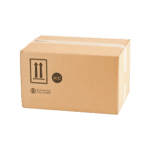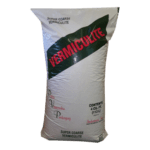 Vermiculite Absorbent Rate and IATA Regulations: How Much Do You Need?
Vermiculite Absorbent Rate and IATA Regulations: How Much Do You Need?
When it comes to transporting dangerous goods, safety is paramount. The International Air Transport Association (IATA) has stringent regulations in place to ensure the safe transportation of hazardous materials. One crucial aspect of these regulations is the requirement for adequate absorbent materials to soak up any liquid content that may leak during transit. In accordance with IATA’s Packaging Instruction 350 for example, which states that “inner packagings must be packed with sufficient absorbent material to absorb the entire contents of the inner packagings and placed in a rigid leakproof receptacle before packing in outer packagings,” vermiculite, a natural mineral with excellent absorbent properties, is often used for this purpose. In this article, we will explore the absorbent rate of vermiculite in relation to IATA regulations and provide an example of how much vermiculite is required to absorb one liter of dangerous goods.
Understanding Vermiculite’s Absorbent Rate
Vermiculite is a versatile mineral that has a high absorbent capacity, making it an ideal choice for managing spills of hazardous liquids during transportation. It is composed of hydrated phyllosilicate minerals and is mined from natural deposits around the world. Its unique structure consists of layers of thin, flat flakes that can expand like an accordion when heated.
The absorbent rate of vermiculite depends on various factors, including the size of the vermiculite particles, the type of liquid to be absorbed, and the quantity of liquid. Typically, vermiculite can absorb up to four to six times its weight in liquid depending on the brand. This exceptional absorbent capacity makes it a valuable resource for mitigating spill-related risks.
IATA Regulations and Vermiculite
IATA regulations are designed to protect people, property, and the environment from the potential hazards associated with transporting dangerous goods by air. To ensure compliance with these regulations, it is essential to have a clear understanding of how much vermiculite is required to absorb any liquid content that might leak during transit.
One of the key requirements of IATA regulations is that absorbent materials should be capable of absorbing the entire liquid content in case of a spill or leakage. The exact quantity of absorbent materials needed can vary based on the specific circumstances and the type of dangerous goods being transported.
How Much Vermiculite is Required for 1 Liter of Liquid?
Are you wondering how much vermiculite you need to absorb different liquids? Understanding the relationship between liquid density and vermiculite absorption can help. Let’s break it down:
As previously discussed, vermiculite is known for its ability to absorb liquid, typically ranging from four to six times its own weight, with variation based on the grade used. For this context, let’s consider the utilization of a standard-grade vermiculite with a four-times absorption rate.
To begin, if we know the weight of one liter of a liquid, we can calculate the amount of vermiculite required for absorption. For instance, water, with a density of about 1 gram per milliliter, weighs 1000 grams per liter.
Given that vermiculite can absorb up to four times its weight in liquid, for 1 liter of water (weighing 1000 grams), we would need 250 grams of vermiculite to fully absorb it.
Now, consider a liquid with a density double that of water. This means it’s twice as heavy for the same volume. Thus, one liter of this liquid would weigh 2000 grams.
Applying the same absorption ratio, for 1 liter of this denser liquid, we’d require 500 grams of vermiculite. That’s because 2000 grams (weight of the liquid) divided by 4 equals 500 grams of vermiculite needed for complete absorption.
In summary, understanding the density of the liquid is crucial for calculating the required amount of vermiculite for absorption. Whether it’s water or a liquid denser than water, the principles remain the same.
It is essential to consult the specific regulations and guidelines for the transportation of the dangerous goods you are handling, as requirements can vary based on the substance’s classification and specific circumstances.
Compliance with IATA regulations is vital when transporting dangerous goods by air. Vermiculite, with its exceptional absorbent properties, is a valuable tool in achieving this compliance. Understanding the absorbent rate of vermiculite and knowing how to calculate the amount needed for different quantities of liquid is crucial for maintaining safety during transit.
In modern times, there are innovative solutions like dust-free absorbent pads that provide the advantages of vermiculite without the messy residue. These pads not only make the handling process cleaner and more efficient but also reduce the risk of dust-related issues during transportation. However, it is essential to ensure that the absorbent pad you choose is suitable for the specific type of dangerous goods you are shipping.
When selecting an absorbent material, it’s imperative to verify its absorbent rate, whether you opt for traditional vermiculite or a modern alternative like absorbent pads. Ensuring that the absorbent material can effectively handle the quantity and type of liquid is a critical step in maintaining the highest standards of safety and adhering to IATA regulations. By using the right amount of the appropriate absorbent material, you can help mitigate the risks associated with transporting hazardous substances and contribute to safer air travel for everyone.
Do you have questions about UN Packaging? Take a look at our UN Packaging FAQ or contact our team of experts at 855.734.5469 or send us an email, we’re happy to help.
Stay up to date and sign up for our newsletter!
We have all the products, services and training you need to ensure your staff is properly trained and informed.
 Custom Packaging Design Custom Packaging Design |
 4G UN Lithium Battery Box 4G UN Lithium Battery Box |
 Vermiculate Vermiculate |





